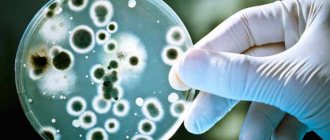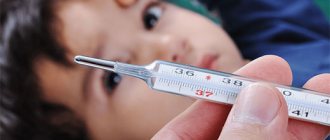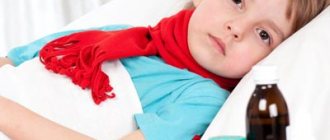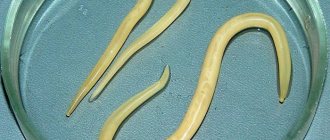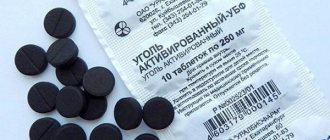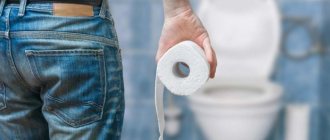Venereology
0
33
Share
Yeast-like fungi Candida are found in the body of every adult and child. Their number is strictly controlled by beneficial bacteria. When the balance is disturbed, pathology develops - candidiasis. It affects internal organs, including the intestines. Candida in a child's stool indicates a dysfunction of the gastrointestinal tract. As a rule, intestinal candidiasis is subsequently diagnosed - the fungus affects the intestinal mucosa.
Causes of intestinal candidiasis in children
Any organ of the child can be affected by fungal infection. The organs of the digestive tract are most often affected, especially the large intestine, because this is the main habitat of candida fungi.
There are 3 groups of causes of the disease:
- systemic;
- local;
- associated with inadequate child care.
Typically, fungus in the intestines develops due to several different reasons.
Systemic reasons
This group combines diseases and conditions of the body accompanied by decreased immunity:
- Primary or secondary immunodeficiency, including AIDS.
- Malignant tumors, especially blood cancers.
- Treatment with antibacterial, hormonal, immunosuppressive drugs.
- Diabetes.
- Frequent colds, which can be both a cause and a consequence of decreased immunity.
- Allergic diseases.
- Physiologically immature immunity in an infant.
Local causes of intestinal fungus
This group includes various diseases of the digestive system:
- functional disorders of large intestinal motility, accompanied by constipation or diarrhea;
- infectious diseases (dysentery, salmonellosis, enterovirus, staphylococcal infection);
- erosive and ulcerative lesions of the digestive tract, for example: nonspecific ulcerative colitis.
Such diseases worsen the condition of the intestinal mucosa, disrupt the vital activity of beneficial lactobacilli, bifidobacteria and provoke the development of pathogenic and opportunistic microflora, including the rapid growth and proliferation of fungi in the intestines.
Inadequate child care
These reasons are the easiest to eliminate:
- Unbalanced diet, deficiency of healthy proteins, vitamins, microelements.
- Lack of hygiene.
- Unsanitary conditions in the child’s place of residence.
Yeast-like fungi are found on environmental objects and in the bodies of all people. Infection of a child with them occurs immediately after birth during interaction with medical personnel, with the mother, and when applying to the breast. But diseases caused by this microorganism will develop only in the presence of the above factors.
Routes of transmission and growth conditions
Yeasts are ubiquitous not only in the environment, but also in the tissues of the human body. In more than half of completely healthy people (50-70%), these microbes are found on the mucous membrane of the oral cavity, inside the feces, and on the surface of the mucous membrane of the final sections of the intestine.
In the case of infection with yeast fungi, it is not entirely correct to talk about the routes of infection, since these microbes settle inside the human body from newborn age. The microbial agent penetrates as follows:
- in direct contact with the mother;
- during breastfeeding;
- upon contact with infected objects.
Thus, the route of transmission of yeast fungi is predominantly contact.
The growth of yeast fungi is promoted by serious influences that inhibit the functions of the immune system. These factors include:
- systemic connective tissue diseases;
- recurring or protracted infectious diseases of another etiology;
- powerful and long-term antibiotic therapy with a wide spectrum of effects without covering with nystatin;
- significant and long-term nutritional errors with a deficiency of microelements, proteins, vitamins;
- organ transplantation followed by immunosuppressive therapy.
All factors related to traditional sanitary and hygienic standards prevent the reproduction and growth of yeast fungi. The most important among them are:
- proper balanced nutrition;
- timely treatment of chronic pathology;
- rational therapy of infectious processes.
The likelihood of developing a systemic fungal infection in a healthy person and even with compensated chronic pathology is low.
Symptoms of intestinal candidiasis
Clinical manifestations depend on the form of the disease:
Non-invasive form
This type of disease is characterized by damage to the intestinal mucosa by Cand fungi >
- pain, rumbling in the stomach;
- flatulence;
- frequent regurgitation, nausea, vomiting;
- loose, frequent stools with white, cheesy specks;
- changes in the intestinal mucosa around the child’s anus: small compactions, painful on palpation.
Sometimes general intoxication signs of intestinal candidiasis in children may develop: fever, lethargy, disturbances in appetite and sleep.
Invasive form
It develops with a severe immune disorder and is characterized by fungal infection not only of the mucous membrane, but also of the deeper tissues of the intestinal wall. Such intestinal candidiasis has very dangerous symptoms: the development of erosions and ulcers in the intestinal mucosa, which leads to the appearance of blood and mucus in the stool.
In children, especially at an early age, the intestinal mucosa is very thin. This contributes to the development of an invasive form of the disease. Lack of timely treatment of any form of intestinal candidiasis leads to the development of life-threatening conditions for the child.
Complications caused by intestinal candidiasis
The most serious complications that worsen the health and threaten the life of the child are:
- Intense intestinal bleeding due to destruction of the walls of blood vessels in the ulcerated mucous membrane.
- Perforation of the intestinal wall with the release of feces into the abdominal cavity and the development of peritonitis.
- Systematization of the process: the development of fungal sepsis when the pathogen enters the systemic bloodstream and the spread of candidiasis to other organs.
- Impaired absorption of nutrients in the pathologically altered intestine, which leads to slower growth and development of the child.
- Dehydration due to persistent diarrhea.
- Chronization of the process.
If such symptoms develop, you should immediately seek medical help.
Candidiasis. Fungal infection of the intestines
What are yeast fungi
Yeast fungi are capable of vegetative reproduction in a single-celled form. Representatives of the genus Candida are normally found in the human intestine. They are symbionts and, with a normally functioning immune system, do not harm the body. They are detected in the oral cavity in 10-25% of the population; in the intestinal contents, Candida is found in 65-80% of people. Fungal flora is transient and can appear and disappear on its own.
Note: stool analysis in a healthy child, carried out 2-3 times over several weeks, often shows different results.
The pathological effect of the fungus becomes possible against the background of a weakened immune system or a decrease in beneficial microorganisms in the intestines. There are 2 possible options for the development of the disease: invasive and non-invasive. The first occurs with severe immunodeficiency and is accompanied by symptoms of chronic nonspecific nonulcerative colitis. The fungus forms pseudomycelium, which grows into the intestinal wall.
Non-invasive varieties are characterized by an increase in the fungal population in the lumen of the colon without the formation of filaments of pseudomycelium. Such forms are diagnosed in 90% of patients with mycogenic dysbiosis and are relatively easy to eliminate. The defining indicator in diagnosis is an increase of more than 1000 CFU/g when intestinal contents are cultured in combination with a characteristic clinical picture. The following Candida species are considered pathogenic for humans:
The active development of the fungus in combination with an imbalance in the bacterial flora leads to the development of an inflammatory process and secondary digestive disorders. A general examination of stool may reveal muscle fibers that are incompletely digested and processed after eating meat, increased mucus content, a slight admixture of blood, and leukocytes.
How to diagnose candidiasis in a child
Since the symptoms of this disease are nonspecific, several methods are used to make and confirm the diagnosis:
- Questioning: finding out the history of life and illness, complaints of the child or parents. Illnesses of the mother during pregnancy, living conditions of the child, and the presence of one or more of the above symptoms may be important for making a diagnosis and carrying out a differential diagnosis with similar pathological conditions.
- Physical examination: examination, palpation of the abdomen, anorectal area.
- Laboratory methods: general, immunological (for the presence of antibodies to candida fungi), biochemical blood tests, urine tests, stool examination for the presence of candida fungi in the intestines. It is necessary to determine their quantity, because even if Candida fungi are found in the intestines, treatment is not always required, but only if their number increases significantly.
- An endoscopic examination of the intestine is carried out if an invasive form of candidiasis is suspected, with severe bleeding, to determine the extent of damage to the intestinal wall.
Disease prevention
Preventive measures for candidiasis include measures to prevent the proliferation of pathogenic fungus in the child’s body.
Since Candida fungi are present in the human body from birth, it is necessary to begin preventing the disease in a child at the stage of pregnancy planning. The following measures will help prevent candidiasis:
- treatment of genitourinary diseases of the mother before the birth of the baby;
- compliance with personal hygiene rules;
- breast-feeding;
- strengthening the child’s immunity;
- proper nutrition;
- prevention and timely treatment of diseases.
Loading...
Share with friends!
Treatment of intestinal candidiasis in children
Several groups of drugs are used for drug treatment of candidiasis:
- Antifungal agents are used in different forms depending on the severity of symptoms and the general condition of the child: orally, in intravenous infusions, locally - in rectal suppositories.
- Antibacterial - with a concomitant increase in the growth of other pathogenic microorganisms in the intestines (Escherichia coli, Staphylococcus aureus).
- For symptomatic treatment, anti-inflammatory, antipyretic, painkillers, drugs against flatulence, diarrhea, and nausea can be prescribed. In case of dehydration or severe intoxication of the child’s body, intravenous administration of crystalloid solutions is necessary.
- Pre- and probiotics are prescribed to restore normal microflora and intestinal function.
- Immunomodulators.
- Correction of the course of the underlying disease against which candidiasis developed.
Treatment of candidiasis in children should be under the supervision of a pediatrician.
Parents should take the following measures on their own:
- Proper nutrition excluding sweets, yeast baked goods, salty, fatty foods, carbonated drinks. The child’s diet must include fresh fruits and vegetables, lactic acid products, lean meat, fish, eggs, whole grain bread, and cereals.
- No less important measures to eliminate and prevent candidiasis in children are maintaining hygiene and cleanliness in the house where the child lives. A small child must be washed after each bowel movement and the diaper changed. Toys, pacifiers, bottles, dishes should be regularly disinfected, bed and underwear should be changed daily.
- Correct daily routine, hardening, walks in the fresh air.
For a more complete treatment of intestinal candidiasis in children, non-traditional methods can also be used.
Treatment of candidiasis with folk remedies
These remedies will not get rid of the causes of candidiasis, but may alleviate the symptoms of the disease.
The following are considered effective:
- Decoctions, infusions of medicinal herbs (calendula, St. John's wort, chamomile). For a glass of water, 1 tablespoon of dried herb is enough. You need to drink such decoctions three times a day.
- A decoction of oak bark, burdock root, burnet root. These products are taken internally, as well as externally in the form of baths or applications.
- Garlic, ginger.
- Oatmeal jelly or decoction.
Only a doctor can answer the question of how to treat intestinal candidiasis in a child. Treatment should be comprehensive, address the causes of candidiasis and, if possible, eliminate most of the symptoms that worsen the child’s well-being. This disease cannot be neglected, because it can lead to the development of life-threatening conditions.
Fungal infections – School of Dr. Komarovsky
In small amounts, yeast fungi are found in stool in 80–90% of absolutely healthy adults and children. However, if the norm is exceeded, they speak of intestinal candidiasis. The disease is caused by Candida yeast fungi and is considered a type of dysbacteriosis (microflora disorder). In some cases, the infection affects not only the small and large intestines, but also the esophagus, stomach, and gall bladder.
What is
Candidiasis, commonly known as thrush, is an infectious disease. The causative agent of this pathology is a fungus of the genus Candida, most often Candida albicans. With intestinal candidiasis, the microorganism affects the intestinal mucosa. Children under three years of age and children with weakened immune systems are most susceptible to infection.
In fact, Candida is already present in the body, but in an insignificant amount, and is non-aggressive. And in the presence of accompanying factors, it begins to actively reproduce, creating entire colonies.
Varieties
There are four types of this disease, depending on the location in the digestive tract:
- Candidal enterocolitis and enteritis. The presence of liquid stools is yellow in color. Possibly the presence of blood streaks.
- Biliary candidiasis. Characterized by hectic fever, pain in the liver area, yellowness of the skin and severe itching.
- Anarectal candidiasis. Characterized by a burning sensation and pain in the anal passage. The pain intensifies with bowel movements. Also characterized by swelling of the mucous membranes and their hyperemia.
- Stomach candidiasis. Characterized by dysphagia and attacks of pain in the epigastric region.
Causes of appearance in adults and children
Candida fungus is part of the normal microflora. However, under unfavorable conditions, the microorganism begins to actively multiply and provokes intestinal candidiasis. The causes of the pathology are the same for children and adults. Most often, yeast fungus is found in stool when:
- long-term and uncontrolled use of antibiotics, hormones, immunosuppressants;
- weakened immunity, including those caused by influenza, ARVI, HIV;
- vitamin deficiency, exhaustion;
- sexually transmitted diseases, as well as thrush of the genital organs;
- diabetes mellitus, obesity;
- hormonal disorders, including those caused by pregnancy, menopause;
- allergies and autoimmune disorders;
- chronic diseases and damage to the gastrointestinal tract, dysbacteriosis;
- malignant neoplasms, chemotherapy and radiation therapy;
- poor nutrition, abuse of sweets, flour, coffee;
- bad habits: alcoholism, smoking;
- stress, overwork, nervous disorders;
- unfavorable ecology, climate change;
- exposure to poisons.
Elderly people over 75 years of age are also at risk.
Broadcast about fungal infection of the intestines
Additional causes of fungus in stool in children
Yeast fungus in a child’s stool is most often detected in the first 1–2 years of life. This is due to the immaturity of the immune system, with the intestines not fully formed.
In addition to factors common to people of all ages, intestinal candidiasis in children often results from:
- eating unwashed fruits and vegetables;
- dirty hands;
- licking various objects and toys;
- inclusion of carbonated drinks, chips, crackers and sweets in the diet;
- stress, difficult psychological conditions in the home, garden or school;
- teenage hormonal changes.
Yeast fungi in a baby's stool often develop as a result of candidiasis (thrush) in the mouth.
Causes
The main reasons for the development of intestinal thrush in children are:
- existing diseases of the gastrointestinal tract;
- tendency to allergic reactions;
- weakened immunity;
- congenital immunodeficiency;
- long-term treatment with antibiotics or hormonal drugs;
- the presence of diseases of the endocrine system (diabetes mellitus, adrenal dysfunction, and so on);
- poor nutrition;
- unacceptable sanitary environmental conditions;
- oncological diseases;
- HIV infection;
- diseases of the circulatory system;
- intestinal dysbiosis.
Symptoms
Clinical manifestations of intestinal candidiasis are the same for adults and children. Minor differences in the course of the disease can be observed only in the case of infants. This is due to the immaturity of the internal organs and systems of babies.
Yeast in the stool of an adult and a child: general symptoms
If Candida fungi actively multiply in the intestines of an adult or child, the patient will experience the following symptoms:
- pain in the lower abdomen or around the navel: the symptom intensifies after eating fatty foods;
- loss or decreased appetite;
- disruption of the gastrointestinal tract: belching, heartburn, rumbling, bloating, increased gas formation, nausea, vomiting;
- diarrhea or constipation;
- unpleasant and pungent odor of feces;
- changes in the color and shape of stool;
- feces “do not sink”: they are poorly flushed down the toilet and remain on the surface of the water for a long time;
- the presence of whitish, cheesy pieces in the stool;
- itching of the anus;
- whitish-yellow coating on the tongue, unpleasant taste in the mouth;
- yellowness of the skin;
- allergic skin rash, acne, brittle nails and hair.
Diagnostics
Intestinal candidiasis in adults and children is detected using the following methods:
- Microscopy of feces and smears from the intestinal mucosa. The biomaterial is examined under a microscope. As a result, the number of fungi in the stool is determined, and the exact type of candidiasis pathogen is determined.
- Bacterioscopy, bacterial culture on nutrient media. Fungal colonies are grown in a nutrient medium. Through analysis, it is possible to determine the sensitivity of the microorganism to various antifungal drugs. The method allows you to prescribe an effective course of treatment.
- Additional tests. Blood test for the content of immunoglobulins and antibodies to Cand fungi > Signs of the presence of fungi in the intestines. Alexander Ogulov
Stool test for yeast fungus
If yeast mold cells are detected in a person, then during treatment, monitoring is constantly carried out in the laboratory, the pathology is eliminated and the microbial environment - the natural flora - is restored. Scatological examination of stool is a complex procedure that includes a complex analysis. The patient must submit the material following the rules:
- 3 days before the test, stop using laxatives, suppositories, enemas;
- It is prohibited to examine the intestines using X-ray contrast;
- 12 hours before the test, stop taking antibiotics;
- stool should be collected using sterile containers with a tight stopper, after urinating and washing the perineum with soap and water;
- The maximum shelf life of collected stool for research is 3 hours.
The laboratory technician, having received feces, places it in a nutrient medium to find out how quickly the mold yeast culture multiplies. With an increased growth rate, the doctor makes a diagnosis of mycosis. In addition to feces, you need to examine the blood for the level of immunoglobulins, antibodies to candida, and urine for traces of fungal activity. Of the secondary ones used:
- endoscopic examination for the presence of ulcers and plaque;
- radiograph;
- a study of cystology and histology, where scraping and biopsy are used - the study of pieces of tissue and cells for disease.
Yeast fungi are representatives typical of the normal microflora of the human digestive canal that belong to the group of opportunistic pathogens. This means that yeast fungi cause the disease only under certain conditions, with a significant decrease in immunity and/or the presence of severe pathologies. The detection of yeast fungi in stool can either indicate pathology or be regarded as a variant of the norm - a doctor’s consultation and a comprehensive examination are necessary.
Treatment methods
In the absence of proper treatment, yeast fungi in the stool of an adult and a child can cause intestinal perforation, ulcers and bleeding, and even sepsis - blood poisoning. Therefore, you should not ignore the disease or self-medicate, but consult a doctor.
Treatment of intestinal candidiasis takes 2–6 months and requires an integrated approach. Therapy is based on several techniques:
- taking antifungal tablets;
- restoration of microflora;
- regulation of intestinal functions;
- strengthening the immune system: vitamins, immunomodulators;
- dieting and giving up bad habits;
- treatment of genital candidiasis and other fungal-provoking diseases;
- use of folk remedies.
Medications
Treatment of intestinal candidiasis depends on the causes, type of pathogen and course of the disease. The complex includes:
- antifungal tablets - for a course of 4-6 weeks and in the maximum dosage: Fluconazole (Diflucan), Intraconazole, Ketoconazole, Pimafucin, Nystatin;
- antifungal suppositories for a course of up to 2 weeks: prescribed only for colon candidiasis, they have active ingredients similar to tablets;
- probiotics to restore microflora - a course of at least a month: Linex, Hilak Forte, Laktovit, etc.;
- enzyme agents for normalizing gastrointestinal tract functions - a course of at least a week: Mezim, Festal, etc.;
- sorbents for removing toxins - a course of at least 10 days: activated carbon, Smecta, etc.;
- vitamin complexes.
To relieve spasms, Drotaverine is used, for flatulence - Espumisan, motherwort, valerian. Funds are prescribed as needed.
If therapy is ineffective, it may be necessary to change the antifungal drug and repeat the course.
Drug treatment for children
Yeast fungi in a child’s stool are treated according to the same scheme as in adults, but with the dosage halved. From the neonatal period, children are allowed antifungal drugs Pimafucin (Natamycin), Nystatin and Fluconazole (Diflucan) in syrup. At the same time, Pimafucin and Nystatin are absolutely safe, since they are not adsorbed by the intestines and do not enter the blood.
If there are bacterial complications, children are prescribed antibiotics Vancomycin or Neomycin. Throughout therapy, children are prescribed probiotics to normalize the microflora.
Diet
In addition to the main therapy, doctors prescribe a diet that inhibits the vital activity of Candida fungi and normalizes the functioning of the gastrointestinal tract. This type of nutrition includes:
- Active consumption of low-fat fermented milk products, such as kefir. The drink contains a large number of probiotics necessary to restore microflora.
- Including healthy foods in the diet: yeast-free wholemeal bread, lean meats and fish, cereals (buckwheat, rice, pearl barley, oatmeal), vegetables, fruits and berries (except cabbage, grapes, bananas, sour apples, citrus fruits, plums and cherries) . Dishes must be steamed, boiled, stewed or baked.
- Refusal from fatty, fried, smoked, salty, sweet, flour and yeast foods (bread, beer, blue cheese), as well as legumes, canned food, fast food, wheat products, milk, coffee, alcohol, carbonated drinks, spices and herbs, ketchup, mayonnaise.
The diet must be followed by both adults and children. When choosing a more gentle diet for babies, you should completely avoid sugar and yeast. Products stimulate the proliferation of Candida fungi.
Folk remedies
Treatment of yeast fungi in the stool of an adult allows the use of folk remedies. However, they should only be used in conjunction with the main therapy.
To get rid of intestinal candidiasis, decoctions of antibacterial and anti-inflammatory herbs are actively used: lemon balm, mint, chamomile, calendula, thyme, linden. Also popular are infusions based on aloe, flax seeds, garlic, honey, lemon juice, and Hercules flakes.
Both adults and children can use olive, coconut or sea buckthorn oil. The products have pronounced bactericidal properties, do not irritate the skin and mucous membranes, and do not cause allergies. Oils can be used externally or taken internally.
Products with antifungal properties will also help suppress the proliferation of Candida fungi: wild strawberries and strawberries, grapefruits and grapefruit seed extract, Jerusalem artichoke, onions, garlic, ginger, oregano oil, bearberry oil, and colloidal silver.
Possible complications
If treatment is not done in a timely manner or adequate medication is not taken, the risk of complications and the disease developing into a chronic form increases.
What complications can there be:
- Perforation of the intestinal wall.
- Ulcers and tumors (benign, possibly degenerating into malignant).
- Intestinal bleeding.
- Pathology of the mucous membrane.
- Diarrhea with blood.
- Sepsis.
After an accurate diagnosis, the doctor will prescribe a course of medication:
- Antibacterial drugs will be prescribed first.
- Probiotics. Their intake is necessary to restore intestinal microflora.
- Drugs that enhance immunity.
- In case of high temperature, antipyretics will be prescribed.
- If pain is observed, take analgesics.
- Antifungal drugs.
- Medicines to normalize intestinal function.
Treatment for concomitant diseases, if any, will also be prescribed.
Features of care
- It is important to follow a diet to achieve a positive effect:
- Compliance with personal hygiene rules.
- Timely disinfection of toys.
- Regular wet cleaning and frequent ventilation.
- It is necessary that the child has his own personal dishes. Mom’s task is to wash it thoroughly after eating.
- Regular air humidification.
- It is necessary to change bed linen in a timely manner.
Traditional methods
Very often, traditional medicine is used to treat thrush. However, it is still advisable to consult with your doctor.
If the disease manifests itself as damage to the skin or oral cavity, the following drugs can be used:
- Aloe juice. Before preparing the medicine, you will need to thoroughly wash the leaf of this plant. Then a cut is made on the leaf and the juice is squeezed out. Next, it is advisable to dilute it with boiled water. The resulting solution is used to treat fungal affected areas.
- Copper solution. It has good antifungal and antiseptic properties. It is recommended to treat the affected areas in the oral cavity. To prepare this solution, you will need to mix one teaspoon of honey with two teaspoons of boiled or purified water. Before using such a product, you need to be absolutely sure that the child is not allergic to honey.
- Baking soda solution is a good disinfectant. It allows you to limit the growth of fungus. To prepare such a solution you will need a teaspoon of baking soda diluted in a glass of boiled water.
- Decoctions of herbs such as sage, chamomile and thyme. Ideal for sanitizing the mucous membrane and preparing therapeutic baths.
